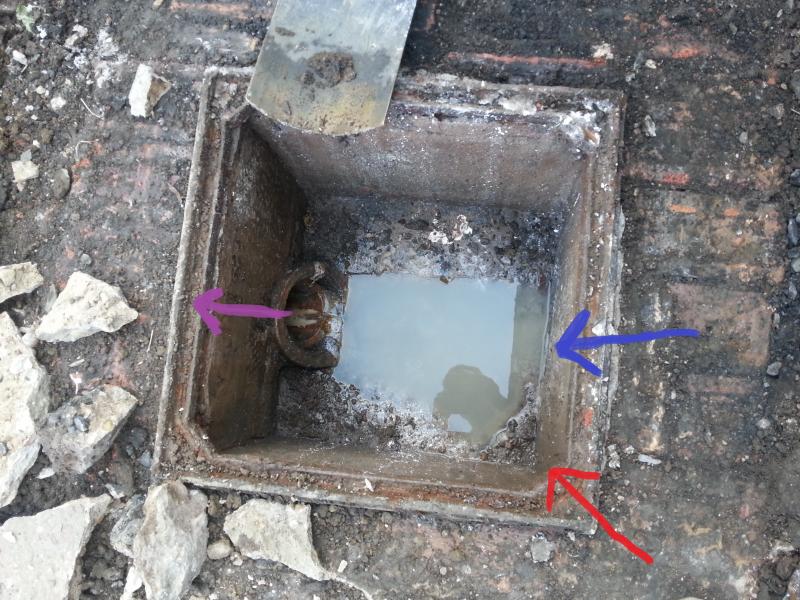I am undertaking some work in the garden, part of which is digging up the concrete around the manhole cover and then laying turf. I may also replace the manhole cover with an infill one to grow turf in it.
I lifted the manhole cover up just out of curiosity and found that there's standing water in there. If I remember correctly this was also the case a few years ago when I moved in, but I thought nothing of it.
Is this normal / correct? I thought the water should drain away freely, not stopping on its way to the main sewer. Currently, the red arrow shows where the water enters this chamber, the end of that inlet is underwater. The blue arrow shows the old inlet from the toilet in the adjacent coalhouse. The toilet is no longer there and the drain has been concreted over.
The purple arrow shows the outlet, though at the moment all the water (etc) flows over that angled pipe - about 45 degrees. It looks like there is another pipe outlet below the angled one, but its submerged and I cant tell if it goes anywhere. If anything it looks like the 45 degrees pipe would "foul" any outlet pipe below it.
Any advice?
(I posted this in building because as I understand it, builders do underground drains. Moderators feel free to move this if you feel its in the wrong place.)
I lifted the manhole cover up just out of curiosity and found that there's standing water in there. If I remember correctly this was also the case a few years ago when I moved in, but I thought nothing of it.
Is this normal / correct? I thought the water should drain away freely, not stopping on its way to the main sewer. Currently, the red arrow shows where the water enters this chamber, the end of that inlet is underwater. The blue arrow shows the old inlet from the toilet in the adjacent coalhouse. The toilet is no longer there and the drain has been concreted over.
The purple arrow shows the outlet, though at the moment all the water (etc) flows over that angled pipe - about 45 degrees. It looks like there is another pipe outlet below the angled one, but its submerged and I cant tell if it goes anywhere. If anything it looks like the 45 degrees pipe would "foul" any outlet pipe below it.
Any advice?
(I posted this in building because as I understand it, builders do underground drains. Moderators feel free to move this if you feel its in the wrong place.)


